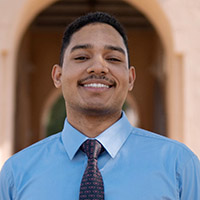As we attend classes, seek jobs and attempt to socialize through our laptops, one thing is undeniable; broadband is an extremely critical part of the fabric of our society and economy. If it is not obvious enough, it is the connective tissue that held us all together for over a year as the coronavirus pandemic ravaged the world.
Access to the internet is a public good.
It saves lives through critical public health information sharing, massive expansion of tele-healthcare services, vaccine distribution and more. It is the foundation of our economy by keeping many sectors running through telecommuting, continued global online commerce, application for fair wage job opportunities and industry reskilling during the economic downturn.
Author Heather McGhee reminds us in her book The Sum of Us that “a functioning society rests on a web of mutuality,” and this sentiment was laid bare throughout the pandemic and especially as we look at digital connectivity.
For us and young people across the state and nation, broadband was necessary to continue our studies, including accessing digital library resources, online classes, virtual extracurriculars, and was even needed pre-pandemic to apply for admission.
We recently participated in a discussion, hosted by the California Emerging Technology Fund (CETF), with Assemblymembers Mike Gipson and Tim Grayson, which provided important context for some of the work being done through government and in private industries to address the digital divide. While the work the Assemblymembers are doing is critical to the future of our state, they can’t do it alone.
According to a recent CETF and University of Southern California survey, while the percentage of connected Californians has grown over the years, there is still an unacceptable 15% of Californians who are digitally disadvantaged. This figure includes 5.6% who only access internet services via cellphone and 9.6% who are unconnected and left without access completely. Affordability is a main reason why households cite being disconnected, with digital literacy and lack of devices also being contributing factors.
We need to reframe our thinking on this service. Right now we treat internet access as a private good – like a sort of luxury item. However, in our technologically dependent society, we must frame our thinking around internet access as a necessary public good. Our generation is looking for action and everything happening around us tells us that we don’t have time to wait.
Driven by socioeconomic and regional inequality, there is a lack of market incentives for providers to invest in low-income, rural and communities of color to get them online. This leads to large gaps in service, opportunities for price-gouging — and most crippling to our society, inequitable economies where the privileged have access to an immeasurable amount of resources and the under-served and underrepresented are left without viable options.
In our conversation, we discussed AB 1425 and AB 1176. Assemblymember Gipson’s bill, AB 1425, creates a $25 million public housing account that would help connect public housing units to high-speed internet service.
Assemblymembers Eduardo Garcia and Miguel Santiago’s bill, AB 1176 seeks to close the divide by creating a program to provide low-cost broadband to eligible users through the existing Lifeline and Emergency Benefit programs.
Both bills provide an important focus on the state’s economically marginalized and oftentimes underserved communities. As we’ve highlighted in the Young Leaders Advisory Council Call to Action the necessary solutions to effectively address these issues demand all hands on deck from different industries, coalitions, and communities. The communities affected most should be at the forefront of decision-making to ensure equitable access to broadband.
While both of these bills would help close the divide, what we are seeking is statewide digital equity. Every person in the state should have high-speed broadband access, digital literacy resources should be made widely available and subsidies can assist low-income families to utilize devices that connect to the internet. As we’ve discussed earlier, AB 14 is an example of legislation that would create infrastructure to improve internet access to Californians who need it most, including underserved urban and rural territories, community anchor institutions, tribal territories and others.
In order to achieve the broad impactful changes needed to serve the state, we need solutions that update critical infrastructure to expand these services while mitigating the current competitive nature of network coverage driving up cost to meet demand. We were excited to see that this is currently in the plan of Governor Newsom’s budget to address, and hope for more bold action by public and private leadership to equitably advance our economy through broadband access.
The public should be aware of these issues and gaps in access and urge decision-makers to take action in providing these resources, this includes both public and private entities. In an increasingly technologically dependent society, access to broadband is a 21st century right. We must equalize opportunity for all in order to have a better California for all.
Lawson Hardrick III is a member of the California Forward Young Leaders Advisory Council and co-author of the Council’s Call to Action: An Intergenerational Approach to a Sustainable Future. Hardrick is a proud 2021 graduate of San Diego State University, Imperial Valley. He will pursue his master’s degree at San Diego State University in San Diego in the fall. Hardrick leads on issues related to mental health and equitable access to resources while using policy to work at the intersection between problem and solution and create opportunities for communities that have been underestimated and underserved.
III is a member of the California Forward Young Leaders Advisory Council and co-author of the Council’s Call to Action: An Intergenerational Approach to a Sustainable Future. Hardrick is a proud 2021 graduate of San Diego State University, Imperial Valley. He will pursue his master’s degree at San Diego State University in San Diego in the fall. Hardrick leads on issues related to mental health and equitable access to resources while using policy to work at the intersection between problem and solution and create opportunities for communities that have been underestimated and underserved.
 Michael Wiafe is a member of California Forward Young Leaders Advisory Council and the California Higher Education Recovery with Equity Taskforce. Wiafe co-authored the Council’s Call to Action: An Intergenerational Approach to a Sustainable Future and serves as an executive committee member of the Inland Economic Growth and Opportunity (IEGO) regional strategic development collaboration. He is currently earning his master’s degree at UC Berkeley’s Goldman School of Public Policy. He continues to provide leadership and support on issues related to higher education and social equity, while creating a future where people are able to advance regardless of the circumstances in which they are born.
Michael Wiafe is a member of California Forward Young Leaders Advisory Council and the California Higher Education Recovery with Equity Taskforce. Wiafe co-authored the Council’s Call to Action: An Intergenerational Approach to a Sustainable Future and serves as an executive committee member of the Inland Economic Growth and Opportunity (IEGO) regional strategic development collaboration. He is currently earning his master’s degree at UC Berkeley’s Goldman School of Public Policy. He continues to provide leadership and support on issues related to higher education and social equity, while creating a future where people are able to advance regardless of the circumstances in which they are born.

